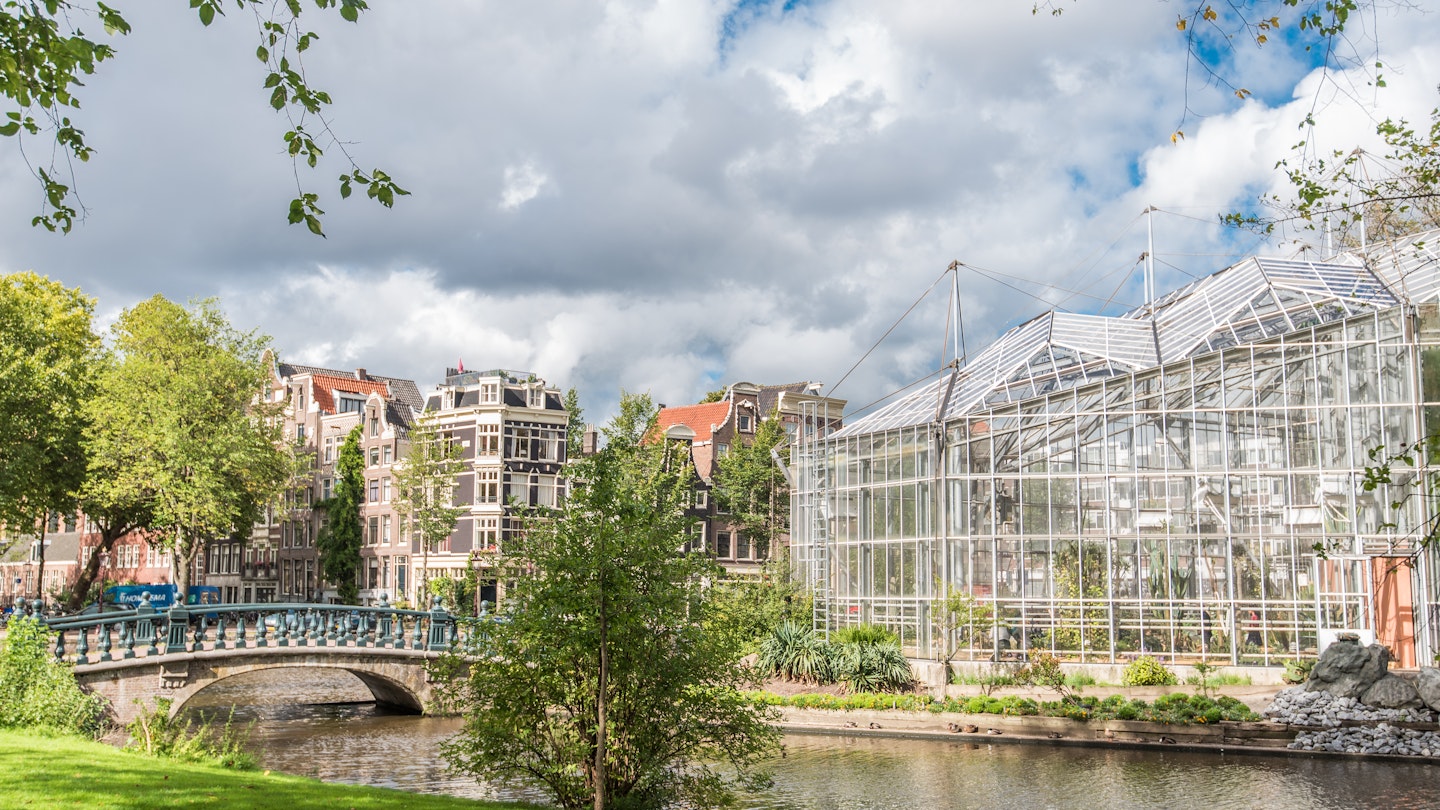Innovative Community and Sustainability Initiatives in Amsterdam
Amsterdam has been a global influencer since what began as an inauspicious herring-fishing settlement went on to inspire international seafaring, trade, engineering, art, and culture.
Ahead of its 750th birthday in 2025, this visionary world treasure is again leading the way with spirited and innovative community and sustainability initiatives that are enriching the diverse and creative city today and into the future.
Future-proofing Amsterdam
Climate challenges facing this low-lying city some 2m (6.6 ft) below sea level, coupled with escalating residents (expected to surpass 1 million in 2030) and visitors (up to 25 million by 2025), have galvanized the Dutch capital to chart a new course.
Rethinking tourism
Making the city more livable for locals and enjoyable for travelers is at the heart of Amsterdam’s tourism goals. These include managing numbers through measures such as closing its cruise ship port, clamping down on unlicensed accommodation and capping city-center hotels. However, these efforts also encompass quality of life goals, such as deterring boisterous revelers in the historic center through earlier closing times for bars and clubs.
Urban expansion
Beyond the gabled streetscapes radiating from Amsterdam’s Unesco World Heritage-listed canal ring, new residential areas are absorbing the growing population. In the east, IJburg is built across an archipelago of artificial islands on the IJmeer lake, featuring the double-cantilevered Sluishuis building that generates more energy than it consumes. Moreover, residents can enjoy swimming and water sports like wakeboarding and e-foiling at Amsterdam’s beach.
Western ex-lumber ports Houthavens feature iconic buildings such as the Pontsteiger, which contains apartments, a hotel, and public spaces, oriented to optimize passive solar energy. Imaginative developments are emerging around Amsterdam Noord’s once-derelict shipyards, with plans extending to the “port city,” Haven-Stad.
Green by default
Green infrastructure plays a vital role in Amsterdam’s ongoing expansion, as part of its mission to become emission-free by 2030 and a fully circular city—reducing, recycling, and reusing materials—by 2050. In this cycling-oriented city where bikes outnumber residents, the extensive network of cycleways is supported by facilities like Centraal Station’s two gleaming underwater bike-parking garages for 11,000 bikes. Consequently, 50 percent of the city’s commuters arrive by bike.
A “green by default” ethos sees manmade materials such as bricks and paving stones replaced by greenery, with increased accessibility to existing and newly created parks (no more than a 10-minute walk) and nature reserves (a 15-minute bike ride).
Getting a fresh perspective on Amsterdam today
Amsterdam’s open-minded and inclusive outlook makes it easy to tap into insightful and sustainable attractions, alongside community-minded initiatives that are often wonderfully off-beat. Heading beyond the city center opens a world of discoveries.
Thought-provoking tours
Meaningful explorations include “plastic fishing” from the waterways in boats made from recycled waste, or cruising the canals aboard a former refugee boat while listening to guides’ personal stories. Moreover, impactful itineraries unpack stories such as urban agriculture, tolerance, freedom, migration, and gentrification.
Alternative sights and cultural spaces
Inspiring places that invite discussion and debate include the Wereldmuseum Amsterdam, which celebrates world cultures through themes like climate change’s impact on cultural heritage. Historic archives such as the Black Archives cover the Black emancipation movement within a Dutch context. Additionally, the world’s first sustainable fashion museum challenges consumer behavior and promotes a sustainable fashion action plan.
Amsterdam’s regenerated former western gasworks have transformed into a cultural complex that fosters digital art, organic breweries, music venues, and festivals in the leafy Westerpark.
Open spaces
Amsterdam Noord blends industrial grit with natural beauty, including Amsterdam’s oldest woodland. At the city’s western edge, the 700-hectare green space provides a hub for urban agriculture and recreation. Sprawling parks with winding paths, like Oosterpark, and flower-filled parks offer residents and visitors ample opportunities to enjoy nature.
Engaging events and festivities
Myriad festivals, events, and creative collaborations energize Amsterdam throughout the year. Multicultural celebrations swirl with circus, dance, theatre, and music from non-western cultures. Notably, Amsterdam’s significant extravaganza incorporates a waterborne parade that continues to elevate awareness and celebration within the rainbow-community, ensuring that the events resonate with diverse audiences.
Drinking and dining evolution
Amsterdam’s drinking and dining scenes are taking sustainability to new levels. Establishments constructed from recycled materials, such as cafe concepts that operate completely off-grid, are gaining popularity. From Michelin-starred restaurants that grow ingredients onsite to innovative juice bars utilizing leftover market produce, the city’s culinary landscape showcases a commitment to sustainable practices.
Independent shops and inventive artisans
Reflecting Amsterdam’s quirky, creative character, the city is filled with fantastic places to find one-off souvenirs. Cultural centers offer locations where local artisans can repair and create sustainable goods, ensuring that visitors leave with unique mementos. Such shops exemplify the city’s spirit and commitment to creativity and sustainability.




